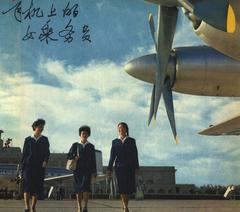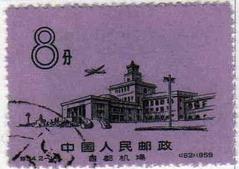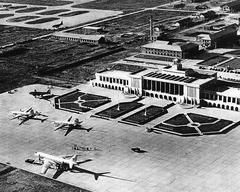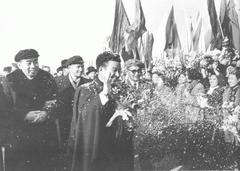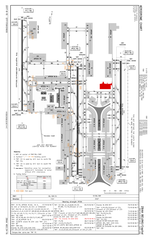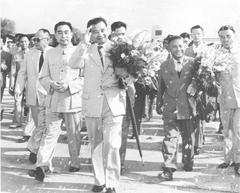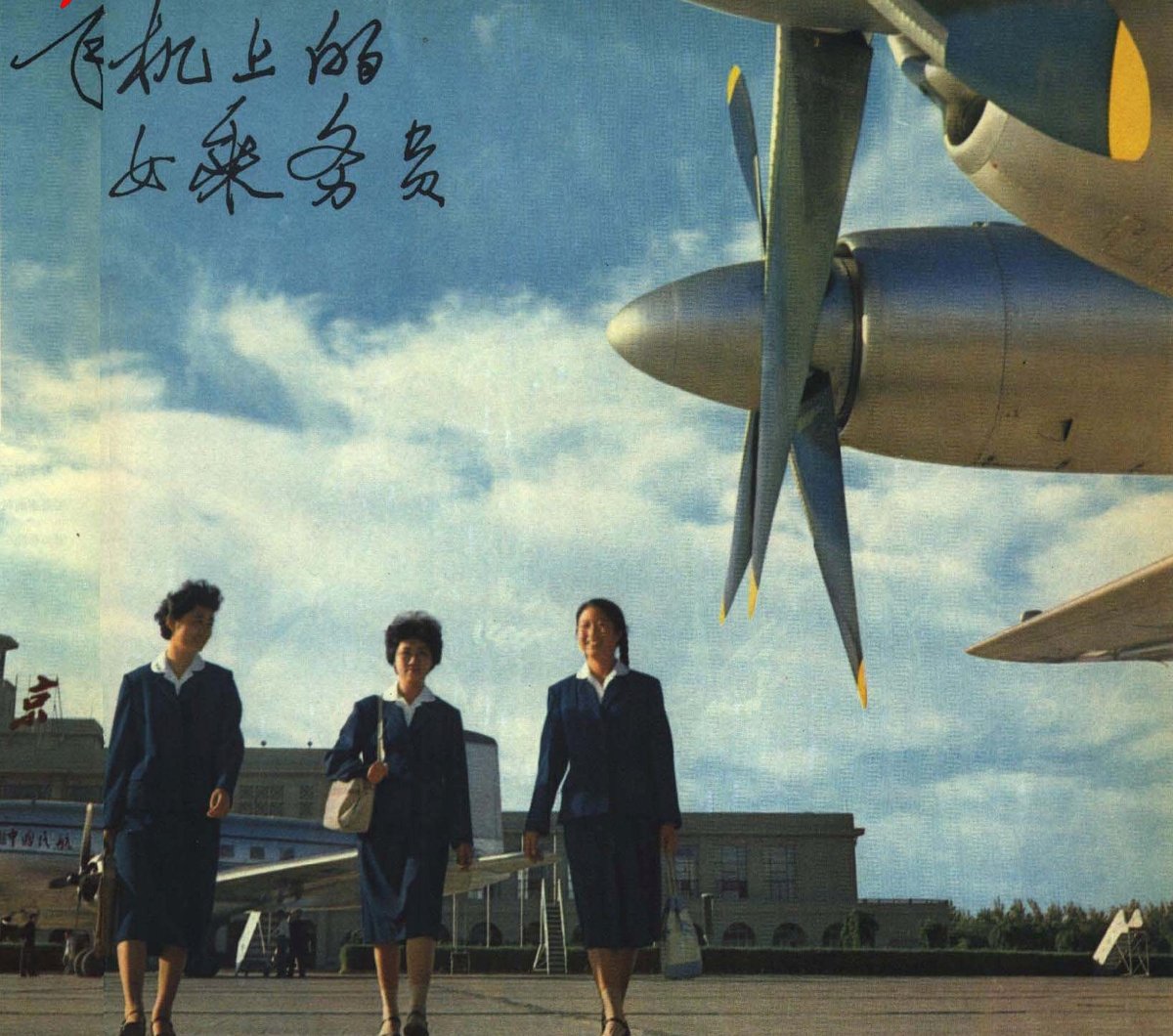
Beijing Capital International Airport: Visiting Hours, Tickets, History, and Travel Tips
Introduction
Beijing Capital International Airport (PEK) is not only a major gateway to China but also a symbol of the nation’s rapid modernization and rich cultural heritage. Whether you’re a first-time visitor, an aviation enthusiast, or planning a layover in Beijing, this detailed guide covers everything you need to know—ranging from visiting hours and ticket information to architectural highlights, sustainability initiatives, and nearby attractions.
Historical Overview and Global Significance
Early Development and Foundational Years
Founded in 1958 and located approximately 32 kilometers northeast of Beijing’s city center, Beijing Capital International Airport began with a single terminal. The airport’s inaugural international flight was operated by Pakistan International Airlines, marking China’s early steps in global aviation (visitbeijing.com.cn).
Expansion and Modernization: Terminals 1 and 2
Terminal 1, opened in 1980, introduced a new era with its spacious design and distinct rotundas. As passenger numbers soared, Terminal 2 was unveiled in 1999 to accommodate both domestic and international flights. After renovation, Terminal 1 was reopened in 2004 (checkerboardhill.com).
Terminal 3: An Architectural and Operational Landmark
Terminal 3, completed in February 2008 ahead of the Beijing Summer Olympics, was designed by Foster + Partners and the Beijing Institute of Architectural Design (fosterandpartners.com). It became the world’s largest terminal by floor area at the time, accommodating up to 50 million passengers annually. The terminal’s dragon-inspired architecture and sustainable features showcase a blend of tradition and innovation.
Olympic Legacy and Modern Role
Terminal 3 served as the principal gateway during the 2008 Olympics, showcasing China’s organizational prowess. Even after the opening of the newer Daxing International Airport, PEK remains a vital hub for airlines such as Air China and Hainan Airlines (beijing-airport.com).
Airport Layout and Terminal Guide
Beijing Capital International Airport features three main terminals—T1, T2, and T3—connected via free shuttle buses and indoor walkways, ensuring efficient transfers for over 100 million annual passengers (China Discovery; iFly).
Terminal 1: Domestic Gateway
- Function: Primarily domestic flights (notably Hainan Airlines).
- Layout: Compact, with basic amenities, check-in counters, and a direct connection to Terminal 2.
- Lounges: ICBC VIP Lounge, CIP Lounge, Hainan Airlines Lounges (Trip.com).
- Facilities: ATMs, currency exchange, business centers.
Terminal 2: Domestic and International Hub
- Function: Handles a mix of domestic and international flights, focusing on SkyTeam partners.
- Layout:
- 1st Floor: Baggage claim and transport connections.
- 2nd Floor: Departures.
- 3rd Floor: Arrivals (China Airline Travel).
- Dining and Shopping: Wide selection, but limited overnight services.
- Facilities: Luggage storage (6:00–22:00), business centers, currency exchange.
Terminal 3: The Dragon Terminal
- Function: Main hub for Air China, Star Alliance, and many international airlines.
- Layout: Divided into T3C, T3D, and T3E, connected by an automated people mover (Trip.com).
- Lounges: Emirates, Cathay Pacific, Air China First Class, BGS Premier, 24-hour BCAT Lounge (Beijing Airport).
- Facilities: Business centers, GoSleep sleeping pods, retail areas, and hourly lounges.
Inter-Terminal Transfers
- Shuttle Buses: Free and frequent between all terminals.
- Indoor Walkways: Connect T1 and T2.
- Automated People Mover: Within T3 for fast transfers (Trip.com).
Passenger Facilities and Services
Wi-Fi and Connectivity
- Free Wi-Fi: Airport-wide, accessible after passport scan or SMS code (Cestee; Beijing Airport).
- Business Centers: Available in all terminals.
Luggage Services
- Luggage Storage: Four locations, 6:00–22:00, 100 CNY per 24 hours (Cestee).
- Lost & Found: 24-hour offices in T2 and T3.
Lounges and Rest Areas
- Hourly Lounges & Sleeping Pods: For private rest in all terminals (Beijing Airport).
- Showers: Limited; no public showers, but changing rooms available.
Dining and Shopping
- Restaurants: Local and international options, most open 7:00–22:00 (Cestee).
- Shops: Extensive retail, especially in T3.
Additional Services
- Currency Exchange & ATMs: Throughout all terminals (WegoPro).
- Medical Clinics: On-site for emergencies.
- Prayer Rooms: For various faiths.
- Drinking Water: Free dispensers post-security.
- Smoking: No indoor smoking areas (Beijing Airport).
Accessibility and Navigation
- Signage: Bilingual (Chinese/English) for easy navigation (WegoPro).
- Digital Tools: Official app and interactive maps (iFly).
- Art and Design: Modern Chinese motifs and cultural displays throughout the terminals (WegoPro).
Visiting Hours and Travel Tips
- Operating Hours: Airport open 24/7; lounges and shops generally open 7:00–22:00.
- Transfers: Plan ahead for inter-terminal changes; use shuttle buses and automated people movers for efficiency.
- Navigation: Download the PEK airport app for real-time information.
Transportation to and from the Airport
- Airport Express Train: Direct link to central Beijing.
- Airport Shuttle Buses: Multiple routes to city districts.
- Taxis & Ride-Sharing: Readily available.
- Car Rentals: Offered by major providers.
Sustainability Initiatives
Beijing Capital International Airport has committed to achieving carbon neutrality by 2025, with energy-efficient lighting, renewable energy, rainwater harvesting, and comprehensive recycling programs (UNEP). Terminal 3’s sustainable design sets new benchmarks in green airport operations (ACI Asia-Pacific; Our China Story).
Technological Innovations
- Biometric Checkpoints: Over 600 for seamless, contactless passenger processing (SITA).
- Smart Infrastructure: Automated baggage handling, high-speed Wi-Fi, and real-time digital flight information (East China Trip).
- Future Expansion: Plans for Terminal 4 and integration with China’s high-speed rail (World Construction Network).
Cultural Experience
- Architecture: Terminal 3’s dragon motif and use of red and gold reflect Chinese heritage (World Construction Network).
- Art and Exhibits: Rotating displays of Chinese art and calligraphy (Our China Story).
- Culinary Choices: Regional specialties like Peking duck, tea, and silk products.
- Hospitality: “Renqing” service philosophy ensures respectful, attentive care (Trip.com).
Nearby Attractions
- The Great Wall of China: ~70 km north of the airport.
- The Forbidden City: Central Beijing, accessible via metro or taxi.
- Temple of Heaven & Summer Palace: Other iconic sites within reach (IAM Civil Engineer).
Visuals and Resources
Images to include:
- Terminal 3 exterior (“Beijing Capital International Airport Terminal 3 Dragon Terminal exterior”)
- Passenger lounges (“Passenger lounge at Beijing Capital International Airport Terminal 3”)
Frequently Asked Questions (FAQ)
Q: What are the visiting hours for Beijing Capital International Airport?
A: The airport operates 24/7, though specific services may have different hours.
Q: Do I need a ticket to enter the airport?
A: No ticket is needed for general access, but some lounges or tours may require booking.
Q: How do I transfer between terminals?
A: Use free shuttle buses, indoor walkways (T1/T2), or the automated people mover in T3.
Q: Is the airport accessible for travelers with disabilities?
A: Yes, full accessibility services are available.
Q: Are there cultural exhibits at the airport?
A: Yes, including Chinese art, calligraphy, and heritage displays.
Exploring the Forbidden City: Beijing’s Iconic Historical Site
Introduction
The Forbidden City, or Palace Museum, is a UNESCO World Heritage Site and served as the imperial palace for 24 emperors. Built between 1406 and 1420, it is renowned for its grand architecture and cultural significance.
History and Significance
The Forbidden City was the political and ceremonial heart of imperial China. Highlights include the Hall of Supreme Harmony and the Imperial Garden. Its layout and artistry are emblematic of traditional Chinese culture (Palace Museum Official Site).
Visiting Hours and Ticketing
- April–October: 8:30 AM–5:00 PM (last entry 4:10 PM)
- November–March: 8:30 AM–4:30 PM (last entry 3:40 PM)
- Closed Mondays (except public holidays)
- Tickets: CNY 60 (discounts for students/seniors), available online or at the Meridian Gate. Booking ahead is recommended.
Getting There
- Subway: Line 1 to Tiananmen East/West.
- Bus: Routes 1, 52, 82, and others.
- From the Airport: Airport Express to Dongzhimen, then transfer to Line 2 or Line 1.
Tours and Audio Guides
- Guided tours (multiple languages) and audio guides are available for a richer experience.
Nearby Attractions
Visit Tiananmen Square, Jingshan Park (great views), and the National Museum of China.
Photography Tips
- Early morning offers the best light and fewer crowds.
- Drone use is prohibited; regular cameras and phones are allowed.
Forbidden City FAQ
Q: Can I access all areas?
A: Some preservation areas are restricted, but most are open.
Q: Is the site wheelchair accessible?
A: Partially; ramps and assistance available, but some terrain is uneven.
Q: Are food and drinks allowed?
A: Generally not, but dining areas are nearby.
Q: When is the best time to visit?
A: Spring and autumn for pleasant weather and scenery.
Essential Tips for Travelers
- Language: English signage is available; tours enhance understanding.
- Tickets: Book online to skip lines.
- Peak Times: Avoid weekends and holidays for fewer crowds.
- Payment: Cash, credit cards, and mobile payments accepted.
- Safety: The site is safe, but keep personal items secure.
- Comfort: Wear comfortable shoes for extensive walking.
Conclusion and Call to Action
Beijing Capital International Airport is a world-class gateway where efficiency, culture, and innovation intersect. Whether you’re transiting or beginning an exploration of Beijing, PEK offers a seamless travel experience and a window into China’s rich heritage. For real-time updates, travel tips, and personalized guidance, download the Audiala app and follow us on social media. Planning to explore Beijing’s historic sites? Visit the Palace Museum website and check out our related articles for in-depth city guides and travel inspiration.
Sources and Official Links
- Beijing Capital International Airport: Visiting Hours, Tickets, History, and Travel Tips, Visit Beijing
- Evolution of Beijing Capital International Airport, Checkerboard Hill
- Beijing Capital International Airport Terminal 3 Project, Foster + Partners
- Beijing Capital International Airport Official Website
- Airport Layout and Visitor Guide, China Discovery and iFly, iFly
- Airport Services and Facilities, Cestee and Trip.com, Trip.com
- Sustainability Initiatives at PEK, UNEP and ACI Asia-Pacific, ACI Asia-Pacific
- Technological Innovations and Biometric Solutions at PEK, SITA
- IAM Civil Engineer: Beijing’s Airport Efficiency and Innovation
- Trip.com Guide to Beijing Capital International Airport
- Palace Museum Official Site
